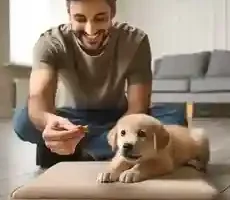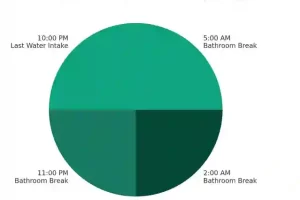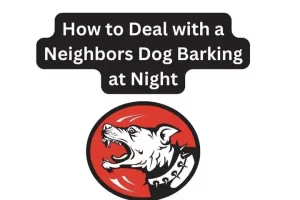How to teach a puppy not to bite? Have you ever played with a cute puppy and suddenly, ouch! Does it bite you? Puppies are adorable, but their little teeth can hurt. Why do they bite, and how can we teach them not to? Puppies learn by playing and exploring.
But they must learn how to behave, including not biting people or things they shouldn’t. Teaching a puppy not to bite is a big part of helping them grow into a friendly and safe dog.
We will show you why puppies bite, How to tell if they’re playing or being too rough, and the steps to teach them to be gentle. We’ll also talk about what toys are good for them, why meeting other dogs is helpful, and what to do if they don’t stop biting. Let’s make playtime fun and safe for everyone!
What are the main reasons puppies bite?
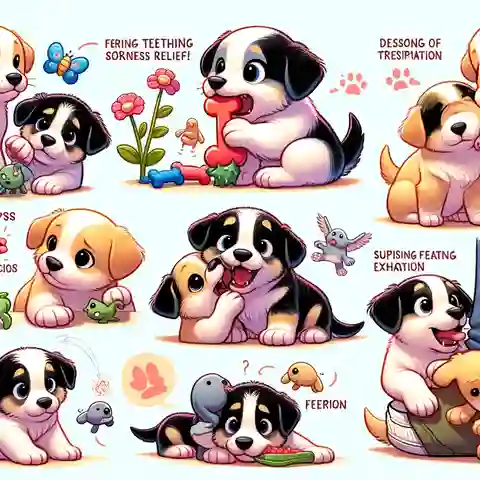
Puppies bite for many reasons. They are learning about the world, and biting is one way they explore. Here are the main reasons puppies bite:.
When Puppies Have Sore Teeth
Puppies are like little kids who are getting new teeth. Their gums can hurt. Chewing or biting feels good because it helps with the soreness.
Puppies Play by Biting
When puppies play, they often bite. It’s their way of playing with their brothers and sisters, toys, or even us. This is how they learn and have fun.
Puppies are Curious
Puppies are very curious. They like to learn about things by using their mouths. This means they might bite things to see what they are.
Puppies Want Attention
Sometimes, puppies bite because they want us to notice them. They learn that when they bite, we look at them or talk to them.
Puppies Might Be Scared
If a puppy is scared or thinks it needs to protect itself, it might bite. This is their way of saying, “I’m scared!”
Learning to Bite Gently
Puppies need to learn how to bite softly. They usually learn this from their mom and brothers and sisters. If they don’t learn it well, they might bite too hard.
Understanding why puppies bite can help us teach them not to bite. We can show them how to be gentle and play without biting.
How to Teach a Puppy Not to Bite?
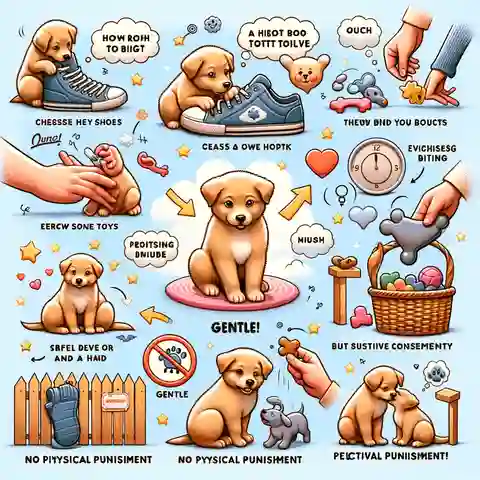
Teaching a puppy not to bite is an essential part of their training and socialization. Puppies naturally explore the world with their mouths, but it’s important to teach them gentle behavior. Here’s a guide to help you through the process:
- Understand Why Puppies Bite
A curious puppy exploring various objects (shoes, toys) with its mouth. Thought bubbles show the puppy is learning about its environment.
- Use Positive Reinforcement
A puppy sitting calmly, receiving a treat from an owner’s hand. Positive symbols like stars or hearts emphasize the reward.
- Redirect Biting to Toys
A puppy biting a chew toy instead of a hand. Arrows can show the redirection from hand to toy.
- Teach Bite Inhibition
puppy softly biting a hand, with a “gentle” icon or symbol. The owner’s face shows approval, reinforcing soft bites.
- Use ‘Ouch’ Method
A puppy biting, and the owner says “Ouch!” with a surprised expression. The puppy looks surprised or stops biting, indicating it understands the reaction.
- Time-Outs for Rough Play
A puppy sitting alone calmly in a small, safe area (like a puppy pen) after biting too hard. A clock or timer symbolizes the time-out period.
- Avoid Physical Punishment
A prohibited sign (????) over a hand spanking a puppy, promoting a no-harm approach. A happy puppy and owner show positive interaction as an alternative.
- Consistency is Key
Multiple family members using the same commands and toys for bite training. Checkmarks or uniform symbols emphasize consistency.
- Socialize Your Puppy
A puppy playing gently with other dogs and humans in a park setting. Social interaction icons (like speech bubbles or paw prints) highlight positive social learning.
- Seek Professional Help if Needed
A professional dog trainer working with a puppy and its owner. Symbols of learning (like a book or a light bulb) emphasize acquiring new skills.
How can you recognize playful biting from aggressive behavior?
recognize playful biting from aggressive behavior
Playful Biting: When puppies play and bite, it’s usually gentle. They might look happy and jump around. Their body looks relaxed. It’s like they are saying, “I’m just playing!”
Aggressive Behavior: If a puppy is biting hard and looks angry or scared, that might be aggressive behavior. They might growl, show their teeth, or their body might be very stiff. It’s like they are saying, “I’m not happy!”
What are the first steps to take when teaching a puppy not to bite?
First Steps to Teach a Puppy Not to Bite
- Say ‘Ouch’ Loudly: When your puppy bites, say “Ouch!” in a loud voice. This surprises them and they often stop. It’s like telling them, “That hurts!”
- Give Them a Toy: If your puppy likes to bite, give them a toy instead. This shows them what they can bite. It’s like saying, “Bite this, not me.”
- Take a Break: If your puppy keeps biting, take a little break from playing. This helps them learn that biting means playtime ends.
How Redirecting Attention Helps in Bite Training
Changing Focus: When your puppy starts to bite, show them something else to do. Give them a toy or start a different game. This makes them forget about biting.
Learning New Things: By redirecting their attention, puppies learn there are other fun things to do. It’s like teaching them new games to play that don’t involve biting.
Staying Calm: Redirecting helps keep things calm. When puppies are calm, they bite less. It’s like when you’re busy with a fun activity, you’re not thinking about being naughty.
Teaching a puppy not to bite takes time and patience, but with these steps, you can help your puppy learn in a fun and gentle way.
What toys or chew items are best for puppies to bite on instead?
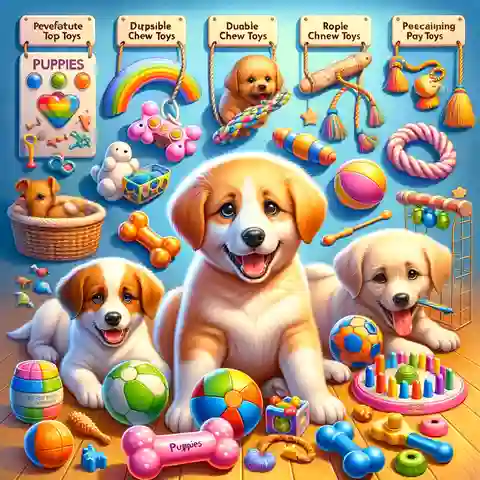
Best toys or chew items for puppies:
Soft Toys: Puppies love soft toys they can carry around. These are great because they’re gentle on their teeth.
Chew Toys: There are toys made just for chewing. They’re tough and help puppies when their teeth hurt from growing.
Rope Toys: Rope toys are fun for pulling games. They also help clean puppy teeth while they chew.
Puzzle Toys: These toys make puppies think. They have to figure out how to get treats out. It keeps their mind and mouth busy.
Why is it important to teach bite inhibition to puppies?
Here is why teaching bite inhibition is important:
Safety: Learning bite inhibition means your puppy knows how to be gentle. This is important so they don’t hurt people or other animals.
Good Behavior: Puppies that understand bite inhibition are nicer to be around. They play nicely and don’t scare others.
Less Trouble Later: Teaching this early helps avoid problems when your puppy grows up. Big dogs that bite hard can cause serious harm.
Happy Puppy: When puppies learn to control their biting, they make more friends. Both people and other dogs will enjoy being around them.
Teaching puppies what they can chew on and how to bite gently helps them grow into well-behaved adult dogs. It’s all about showing them the right way to use their teeth!
Socialization’s role in preventing biting:
Meeting New Friends: Socialization means letting your puppy meet many people and other dogs. This teaches them how to be friendly and play without biting.
Learning from Others: When puppies play with other dogs, they learn about bite inhibition. The other dog might yelp or stop playing if they bite too hard. This shows them that biting hurts.
New Experiences: Socialization also means experiencing new things. This helps puppies be safe from new sounds, places, or people. A scared puppy might bite, so this is important.
Building Confidence: Confident puppies are less likely to bite. Meeting new friends and exploring new things helps build this confidence.
How can puppy classes assist in teaching not to bite?
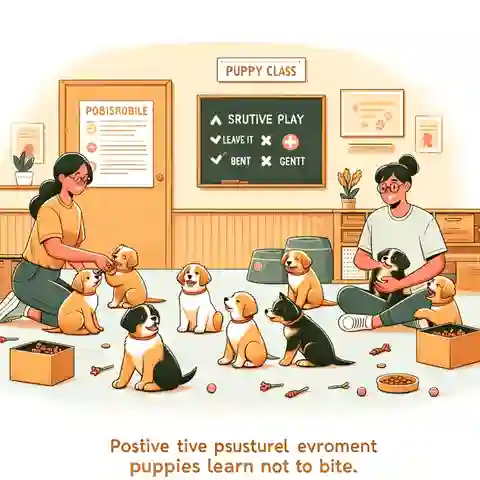
Here is how puppy classes help teach not to bite:
Structured Play: In puppy classes, playtime is supervised. This means puppies learn to play nicely under a trainer’s watchful eye.
Learning Commands: Trainers teach commands like “Leave it” or “Gentle.” These commands help stop biting before it starts.
Positive Reinforcement: Puppy classes use treats and praise to reward good behavior. Puppies learn that not biting gets them nice things.
Social Skills: Classes are a great place for puppies to practice their social skills. They learn how to greet and play without biting.
Puppy classes and socialization are key to teaching your puppy not to bite. They help puppies learn to be gentle, making them happier and safer pets.
What are some common mistakes owners make when teaching puppies not to bite?
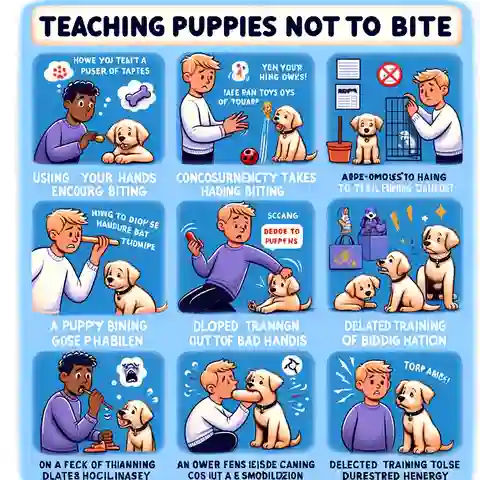
Here are common mistakes in teaching puppies not to bite:
- Using Hands as Toys: Sometimes, people play with puppies using their hands, encouraging them to bite.
- Not Being Consistent: If sometimes biting is allowed and sometimes not, puppies need clarification.
- Punishing Too Harshly: Yelling or being too strict when a puppy bites can scare them. This might make them afraid or even more likely to bite out of fear.
- Ignoring Good Behavior: Forgetting to praise or treat puppies when they play without biting misses a chance to show them the right way to act.
- Skipping Socialization: Not letting puppies meet other dogs and people can lead to fear and biting.
- Not Providing Enough Chew Toys: If puppies don’t have things they can chew on, they might decide to chew on people instead.
- Waiting Too Long to Start Training: The best time to teach puppies not to bite is when they’re young. Waiting too long can make it harder to change their habits.
- Not Redirecting Their Energy: Puppies have a lot of energy. They might use it to bite if they don’t have a way to use it. Playing games or going for walks can help.
Avoiding these mistakes can make teaching your puppy not to bite easier and more fun for both of you.
How should you react if a puppy bites you?
Here is how to react to puppy bites:
- Stay Calm: If a puppy bites you, try to stay calm. Yelling or moving might scare them or make them more excited.
- Use a Firm “No”: Say “No” in a firm, but not loud, voice. This lets them know biting is not okay.
- Redirect: Offer them a toy or chew item instead.
- Take a Break: If they keep biting, stop playing for a while.
- Praise Good Behavior: When they play without biting, give lots of praise and maybe a treat.
Why is consistency key in training puppies not to bite?
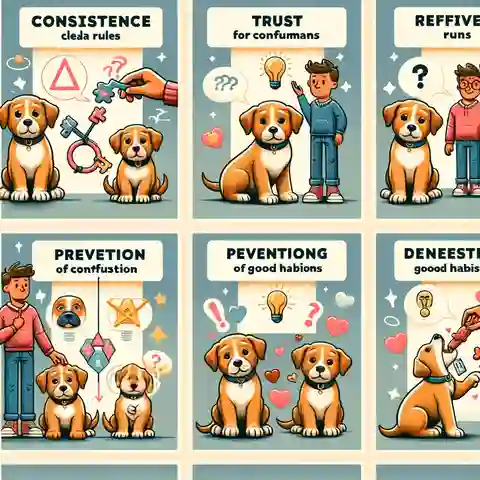
Here is why consistency is key:
- Clear Rules: Being consistent means the rules are always the same. Puppies learn faster when they know what to expect.
- Trust: Consistency helps build trust. Puppies feel more secure when they understand the boundaries.
- Effective Learning: When the response to biting is always the same, puppies learn the lesson more deeply. They understand what behaviors are rewarded and which are not.
- Prevents Confusion: If biting is okay sometimes and sometimes not, puppies get confused. This can make training take longer and be more frustrating for both of you.
- Builds Good Habits: Consistent training helps puppies develop good habits that last a lifetime. They learn to play gently and interact safely.
- Consistency in training is crucial for teaching puppies not to bite. It helps them understand the rules, feel secure, and develop into well-behaved dogs.
Using Positive Reinforcement for Good Behavior
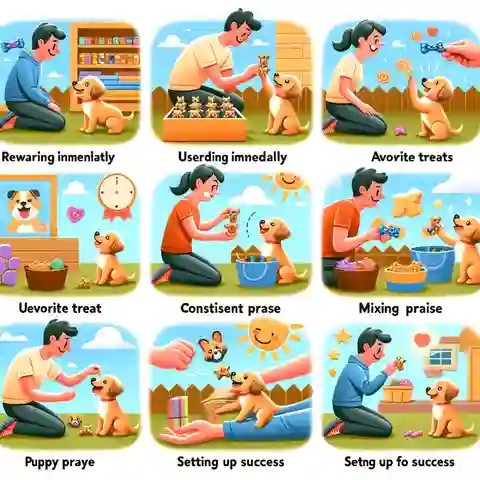
- Reward Immediately: When your puppy does something good, like playing without biting, give them a treat or praise right away. This helps them connect the good behavior with the reward.
- Use Favorite Treats: Find out what treats your puppy loves the most. Use these as rewards to make the positive reinforcement even stronger.
- Be Consistent with Praise: Always praise your puppy for good behavior. Use a happy voice and maybe even some gentle petting to show them they did well.
- Mix It Up: Along with treats and praise, sometimes give them a favorite toy or start a fun game as a reward.
- Set Them Up for Success: Create situations where your puppy can show good behavior and be rewarded.
What should you avoid doing when your puppy bites?
Here is what to avoid when your puppy bites.
- Don’t Yell or Use Physical Punishment: This can scare your puppy or make them more aggressive. It doesn’t teach them not to bite; it makes them afraid of you.
- Avoid Playing Rough: Games that encourage rough play or using your hands as toys can make biting seem okay. Stick to toys and games that promote gentle play.
- Please Don’t Ignore the Behavior: Ignoring your puppy when they bite doesn’t teach them it’s wrong. Instead, use it as a teaching moment to show them the correct behavior.
- Don’t Skip Training Opportunities: Every moment can be a training opportunity. Letting some bites go without correction because you’re busy or distracted can undo your training efforts.
- Avoid Inconsistency: Don’t switch between different reactions to biting. Choose a training method and stick to it so your puppy understands what’s expected.
When should you seek professional help for a biting puppy?
Here is when seeking professional help for a biting puppy:
- Aggressive Behavior: If your puppy’s biting seems aggressive, not just playful, it’s time to get help. Signs include growling, snapping, and biting, which isn’t part of playing.
- No Improvement: A professional can offer new strategies if you’ve tried training and your puppy still bites a lot.
- Someone Gets Hurt: If the biting leads to injuries, getting help is important before it worsens.
- Fearful or Anxious Puppy: Sometimes biting is because of fear or anxiety. A professional can help address the root cause.
- You Feel Overwhelmed: If you’re stressed or need clarification on training, a professional can guide you and give you confidence.
How does teaching a puppy not to bite benefit its future behavior?
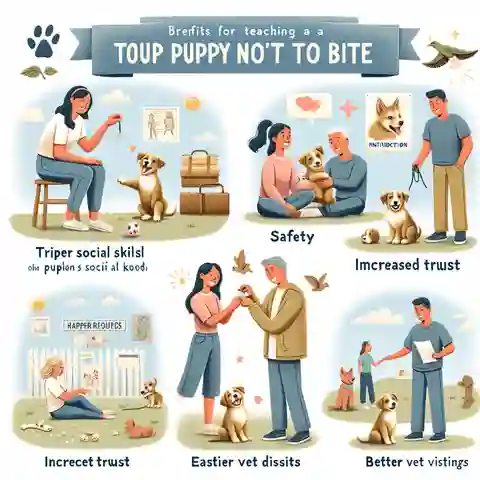
Benefits of teaching a puppy not to bite for its future behavior:
- Safety: A dog that knows not to bite is safer around people and other animals.
- Social Skills: Puppies that learn bite inhibition are better at making friends. They play more gently, which means more fun and less worry.
- Trust: When your dog doesn’t bite, people trust them more.
- Easier Vet Visits: Dogs that don’t bite are easier to check and treat at the vet.
- Better Bonding: Training your puppy not to bite strengthens your bond.
If you’re struggling, don’t hesitate to seek professional help.
Every puppy is different. Some might learn quickly, while others take more time. With love and support, your puppy will get there, and soon, you’ll both enjoy a full night’s sleep.
FAQs: Teaching Your Puppy Not to Bite
How do I teach my puppy not to bite my hands?
- Use toys as a distraction. When your puppy goes to bite, offer a toy instead.
- If they do bite, make a yelp sound to signal it hurts and stop the play immediately.
How can I stop my puppy from biting things around the house?
- Puppy-proof your home by removing items they shouldn’t chew.
- Offer plenty of chew toys and praise them for using these instead.
What’s the best way to prevent my puppy from biting other dogs?
- Socialize your puppy early with well-behaved dogs.
- Monitor play and separate them if play gets too rough.
How can I teach my puppy not to bite when playing?
- Use toys for play, keeping your hands clear.
- Stop play and ignore your puppy for a few moments if they bite, teaching them play stops with biting.
How do I stop my puppy from biting my clothes?
- Distract them with a toy or treat when they start biting clothes.
- Use firm commands like “No” and immediately show them what they can chew.
What should I do to teach my puppy not to bite my fingers?
- Never use fingers as play toys. Always have a toy or chew item to redirect their attention.
- Use a firm “No” and replace your fingers with a chew toy.
How can I prevent my puppy from biting my ankles?
- Distract them with toys or treats when they target your ankles.
- Ignore them or use a firm command to stop them, then redirect their behavior.
Best way to teach a puppy not to bite a child?
- Supervise interactions between your puppy and child closely.
- Teach children how to safely interact with the puppy, like not pulling tails or ears.
How to teach a puppy not to bite hard?
- Practice bite inhibition by yelping when they bite too hard and then ending playtime.
- Reward softer play with treats and praise.
Are there YouTube resources for teaching a puppy not to bite?
- Yes, there are many training videos on YouTube. Look for reputable trainers who use positive reinforcement methods.
How long does it take to teach a puppy not to bite?
- It varies, but with consistent training, most puppies start to learn bite inhibition within a few weeks. Full training can take several months.
Teaching your puppy not to bite is like teaching them how to be a good friend. It’s all about being kind, patient, and consistent.
We’ve learned puppies bite for many reasons, like teething or wanting to play. It’s important to show them what they can chew on, like toys, and to help them learn to be gentle.
Meeting other dogs and going to puppy classes can also help. If your puppy bites, it’s not the end of the world. Stay calm, be firm, and show them the right way. But if you’re having a tough time, it’s okay to ask for help from a dog trainer.
When puppies learn not to bite, they become safer and happier dogs. And that means more fun and less worry for you and your furry friend.
Teaching them not to bite is a big step in a long, happy life together.

